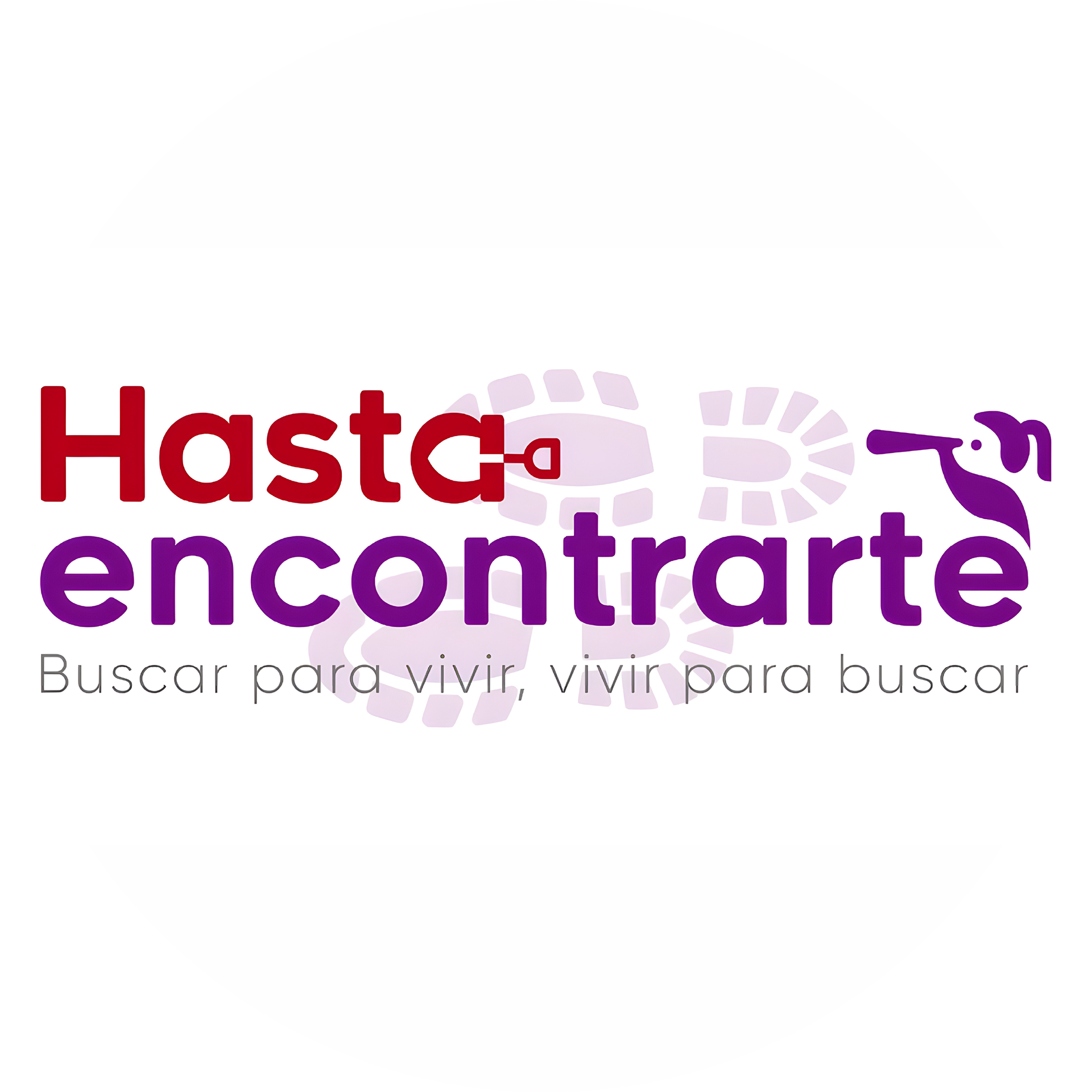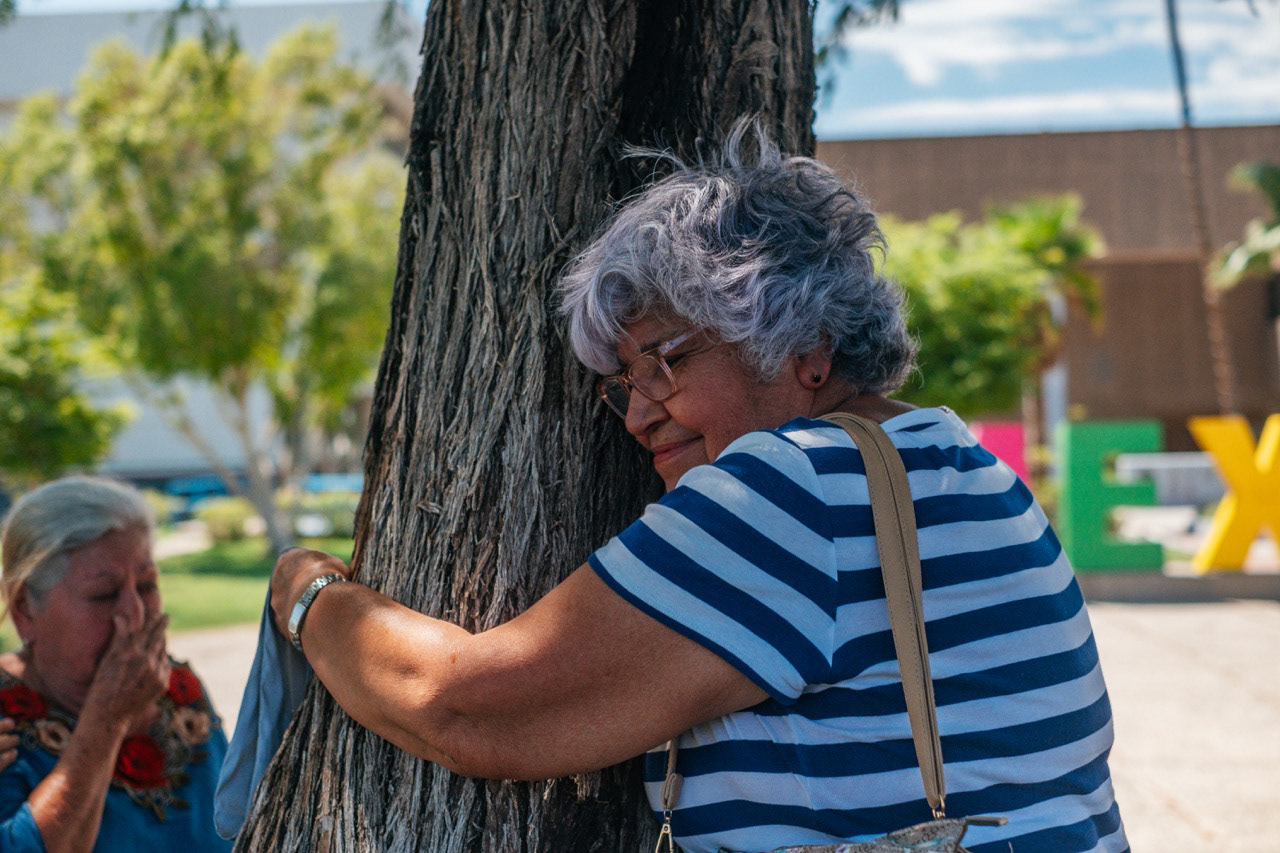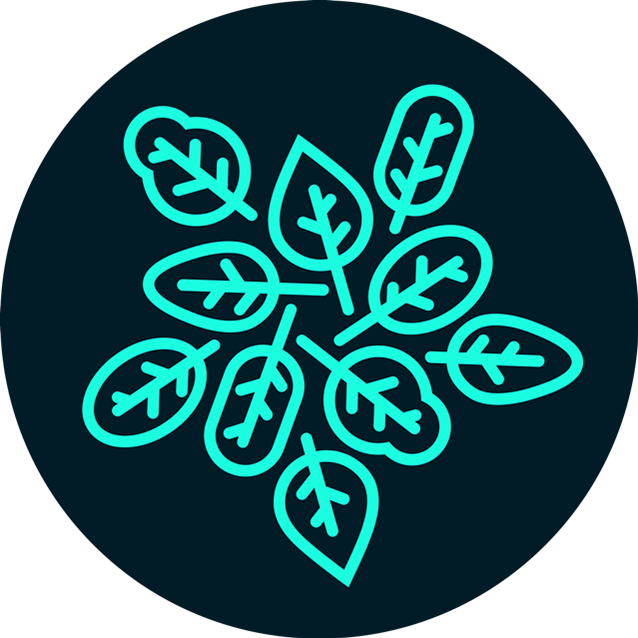Who is a part of El Bosque de la Esperanza?
For the time being, the following collectives in 3 Mexican states are part of this first start of the Bosque de la Esperanza:
In Baja California: Siguiendo tus pasos (Ensenada), Madres Unidas y Fuertes (Mexicali), and Una Nación Buscandote (Tijuana)
In Guanajuato: Hasta Encontrarte, who has adopted trees in the cities of Irapuato, Pénjamo and Silao.
In Veracruz: Colectivo Solecito de Veracruz, who adopted a tree in the Port of Veracruz
All of them are people who are searching for their "treasures"—as they name their disappeared loved ones—, or who have already found them—oftentimes not alive—, and who have been denied their rights to truth, justice, reparation and non-repetition. That is why they resort to exercising their right to memory as a form of resistance and to place their struggles to make visible, stop and resolve the humanitarian crisis of disappearances that has affected more than 110,000 people in Mexico.






First participatory design workshop with the Hasta Encontrarte collective. Irapuato, Guanajuato, April 2023

First participatory design workshop with the Solecito Collective. Port of Veracruz Veracruz, May 2023.

First participatory design workshop with the collective Siguiendo tus Pasos. Ensenada, Baja California, May 2023.

00 bol First participatory design workshop with the collectives: Madres Unidas y Fuertes, Una Nación Buscándote. Tijuana, Baja California, May 2023.00 bol First participatory design workshop with the collectives: Madres Unidas y Fuertes, Una Nación Buscándote. Tijuana, Baja California, May 2023.
What is El Bosque de la Esperanza?
The Bosque de la Esperanza, or "Forest of Hope", is a long-term collaborative project that seeks to facilitate access to the right to memory in various regions of Mexico, proposing physical and virtual connections between spaces of memory for victims of disappearance that protects memory's autonomies, is self-managed, decentralized, dispersed, and accesible. The project seeks to weave together spaces of memory and protest—commonly known as Árboles de la Esperanza, or "Trees of Hope—that since 2015 have been created by family members searching for their missing loved ones.
This is achieved by connecting the collectives, their trees and the ribbons they hang through a collective "forest of hope". The virtual platform is directly co-created by the search collectives and families, who design memory spaces for their relatives. There, they can log memories with texts, photos, videos, sound and other media. A central objective of the memorial is to strengthen spaces of memory, mourning, and resistance built by the victims' families, companions, and solidary communities.
On the other hand, the project seeks to promote processes of rehumanization-triggering empathy for non-affected audiences so that they effectively initiate and sustain forms of accompaniment to search collectives in their efforts and demands to find their disappeared and missing relatives.
A diagram summarizing the sections of the virtual platform of El Bosque de la Esperanza.
How was El Bosque de la Esperanza started?
El Bosque de la Esperanza is a project born from many places and times: on the one hand, it has its origins in the taking of the first Tree of Hope on August 30, 2015 in Torreón, Coahuila, by the FUUNDEC-M collective. Since then, there have been other re-significations of trees in public spaces to make visible the memory of disappeared people in Guanajuato, Veracruz, Baja California, Mexico City, Puebla and Sinaloa, among many other places and times.
In January 2022, the Hasta Encontrarte collective in Guanajuato took 3 Memory Trees in the cities of Pénjamo, Irapuato and Silao. They had the idea that they would be interconnected in a forest. In 2022, more collectives from Baja California and Veracruz joined to collectively initiate El Bosque de la Esperanza together with Hasta Encontrarte.








Where are the Trees of the Bosque?
There are about 30 trees that have been taken throughout the country to commemorate the missing persons. In this map we show some of the trees we have identified, and mark which ones are already part of El Bosque de la Esperanza.
How is the project financed?
El Bosque de la Esperanza is a non-profit project, and until April 1, 2023 has received a first seed funding from the organization ELEMENTA DDHH, where 90% of the donation will be invested in the construction of the digital and physical components of the memorial, 8% in travel and materials for workshops and only 2% in fees. Currently, the core memorial team is seeking funding from other organizations in Mexico and funders in Europe. Given VIFT's access—as a Swiss-based NGO—to completely independent funding sources, the absence of conflicts of interest with the project's objectives is guaranteed.
Core team
There are hundreds of people behind the creation of El Bosque de la Esperanza, but we think it is important for you to meet the small team that accompanies the efforts of all the different collectives that make up El Bosque. This team is currently made up of Sergio Beltrán-García, design lead, VIFT, Aline Wani, research lead, and Maevia Griffiths, documentation lead.
Would you like to join the Forest of Hope newsletter, or ask us a question?
¡Muchas gracias!
